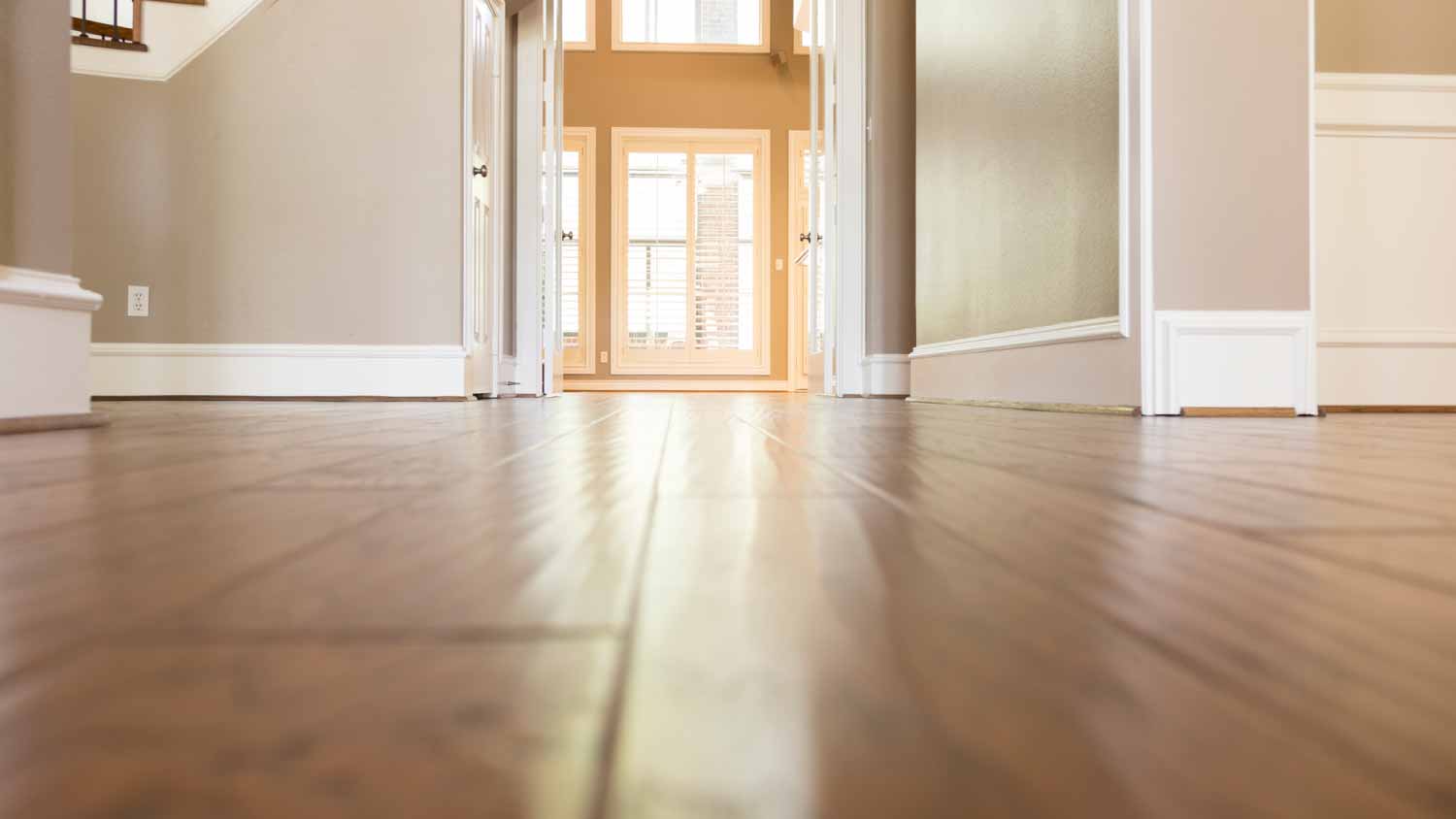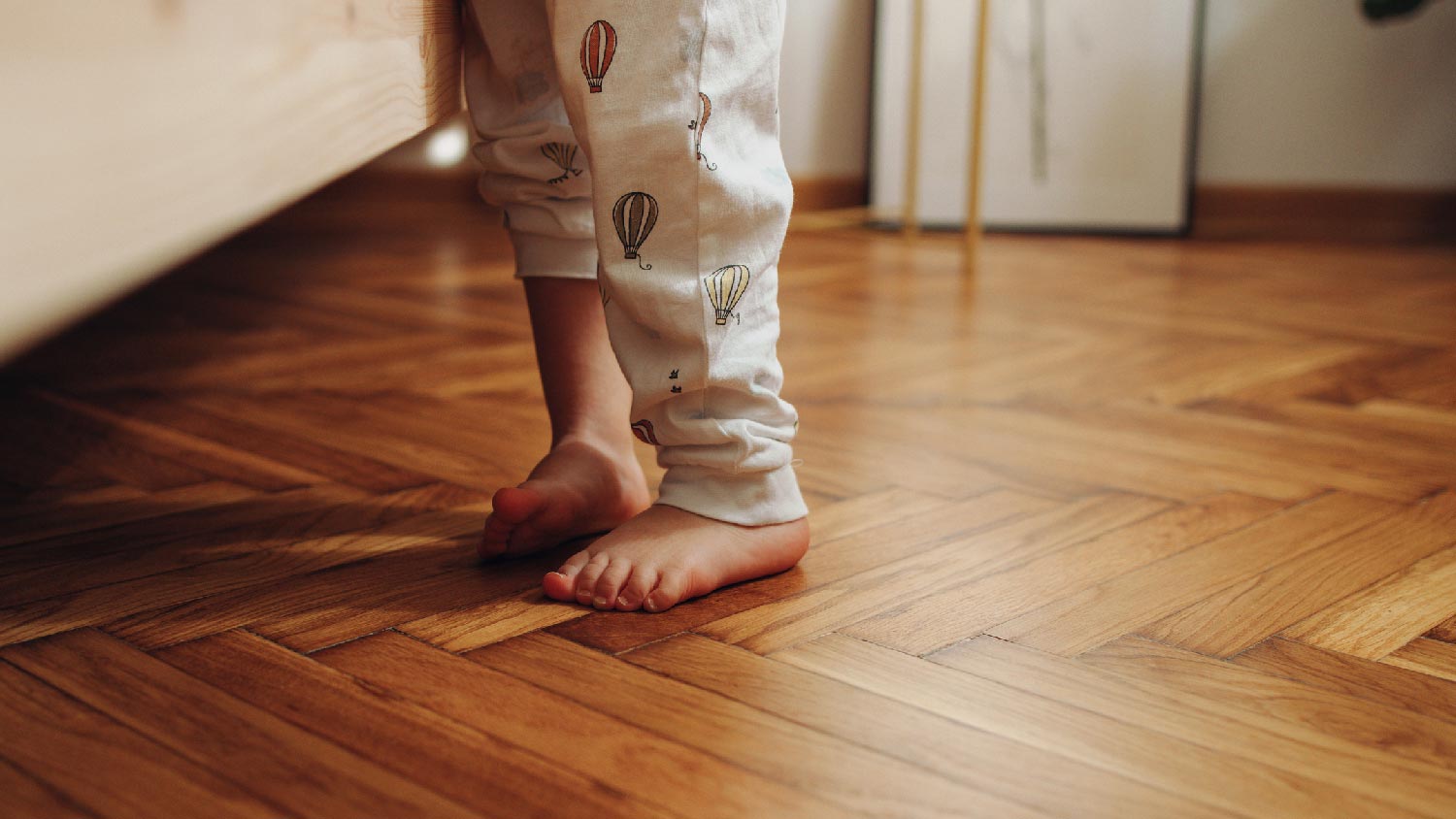Should You Paint or Refinish Floors First?
Spoiler: there's no right or wrong answer


There’s no “better” choice to go with first between repainting or refinishing floors.
A local professional can handle the job smoothly with no hassle so that you don’t have to make a decision.
Doing both tasks simultaneously and going back and forth for each step is also a valuable option to consider.
Which came first: the wall paint or the refinished flooring? If you’re looking for a catch-22 to eat up your time, trying to choose whether to paint your home’s interior walls or refinish floors first might do the trick. The short answer to this riddle? It depends. Here’s what the everyday DIYer needs to know.
Pros and Cons of Painting Your Walls First
Some think that painting first is the best option. Painting the ceiling, wall, and trim often works best if you’re a work-from-the-top-down type of organizer.
| Pros | Cons |
|---|---|
| No need to worry about paint dripping on the floor | It’s more difficult to match paint shades to flooring tones |
| No risk of damaging floors with paint thinner | If you plan to sand the floors after you paint, you’ll need to protect the walls from the dust |
| Costs less to fix painting mistakes than repair floor damage | You could damage the freshly painted baseboards |
If you choose a lighter paint, like eggshell, cleaning dust and floor stain from the new coat could be a bit tricky. Consider basing your decision on the type of paint you’ll use: for example, satin finishes are easier to clean than flat finishes. In addition, flat-finish paints are more likely to attract dust.
Pros and Cons of Refinishing Your Floors First

There are some benefits of getting your base set before working on the walls. Here’s a look at the perks and drawbacks of refinishing your walls before you paint.
| Pros | Cons |
|---|---|
| It’s easier to choose a paint shade that matches wood tones versus the reverse | You’ll need to cover the entire floor in drop cloths as you paint |
| Damage to the wall from a sander is relatively simple to fix | Sanded wood can soak up paint easily |
| If you sand the floors first, you won’t have to worry about dust working its way into your paint job | The new floor could become damaged |
If you decide that you want to finish your floors first, consider hiring a local floor refinishing company that uses a dust-free sanding process.
Can I Paint My Walls and Refinish My Floors Simultaneously?
An alternative solution would be to work both projects simultaneously.
Consider prepping your floors (sanding any needed areas) before covering with a drop cloth and painting. Prep your walls and ceiling, and then paint the ceiling first. Covering the ceiling before your new flooring is finished will protect the finish from ladder marks.
You could then put in your flooring and fix up the baseboards before covering the floors and painting the walls.
Sanding the floor first prevents damage from the sander and dust, and allows you to make any needed repairs before working on the final flooring. And if you’re considering painting your hardwood floors instead of refinishing, you can still do these projects simultaneously.
How to Decide Whether You Should Paint Walls or Sand Floors First
Several factors will affect your or your local remodeling contractor’s decision about the order to complete projects. The size of the space, the timeline, and the room’s current condition could affect the order that works best for your project.
If you hire a local wall painter to help with the project, they may have a preference for how the job is handled. The same applies to construction companies that may help install or repair flooring.
Both painting and refinishing have some time considerations. For example, one thing you should know when refinishing hardwood floors is that you need to avoid walking on it for at least 24 hours after the final coat of floor finish is applied. So it could be at least a full day after your floors are complete before you can start painting.
If you use oil-based paint for your walls, you can apply a second coat within hours. Otherwise, you’ll need to wait 24 hours before adding a second coat. If you go this route, you may need to wait up to a day or more before you start on the floors.





- How to Paint Hardwood Floors for the Best Results
- What to Do First: Paint or Floors?
- 9 Great Tips for Refinishing Your Hardwood Floors
- How to Restore Hardwood Floors Without Sanding: A Complete DIY Guide
- 11 Painting Tips and Techniques for Your Home Painting Project
- How Often Should You Refinish Hardwood Floors?
- 10 Common Painting Mistakes Homeowners Should Avoid
- Do You Paint Trim or Walls First in Your Room? How to Decide
- When Is the Best Time to Paint Indoors? A Helpful Guide
- Paint or Carpet First? A Splatter-Free Guide to a Flawless Room Renovation










